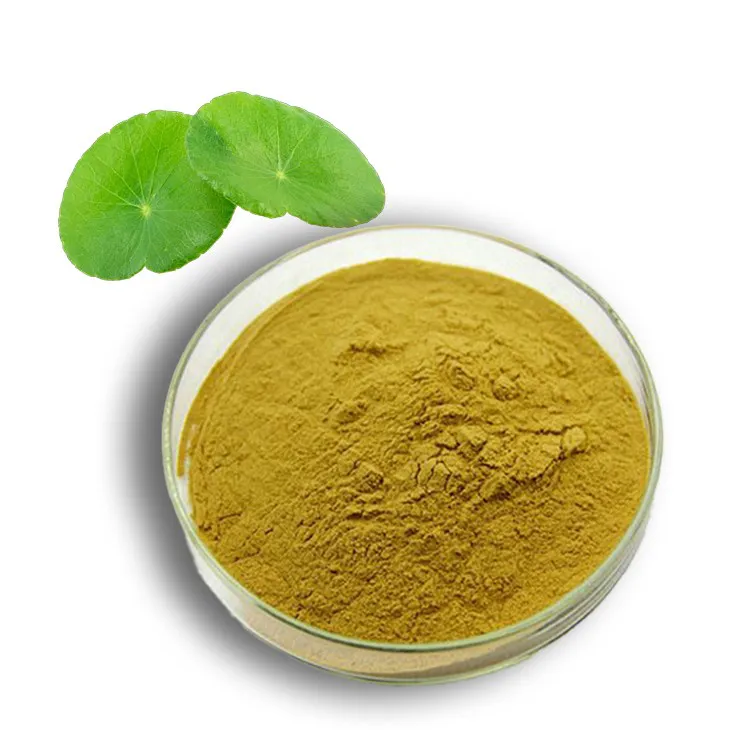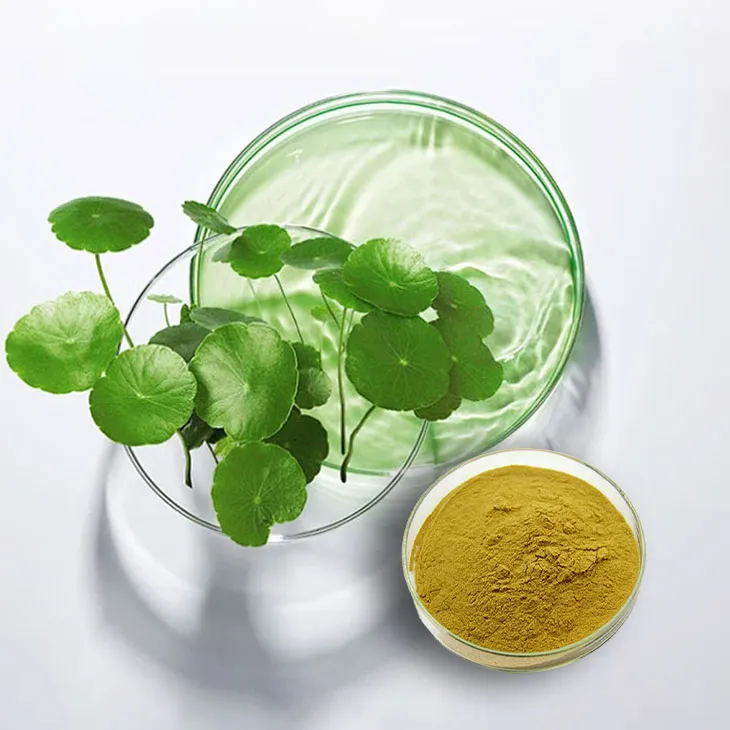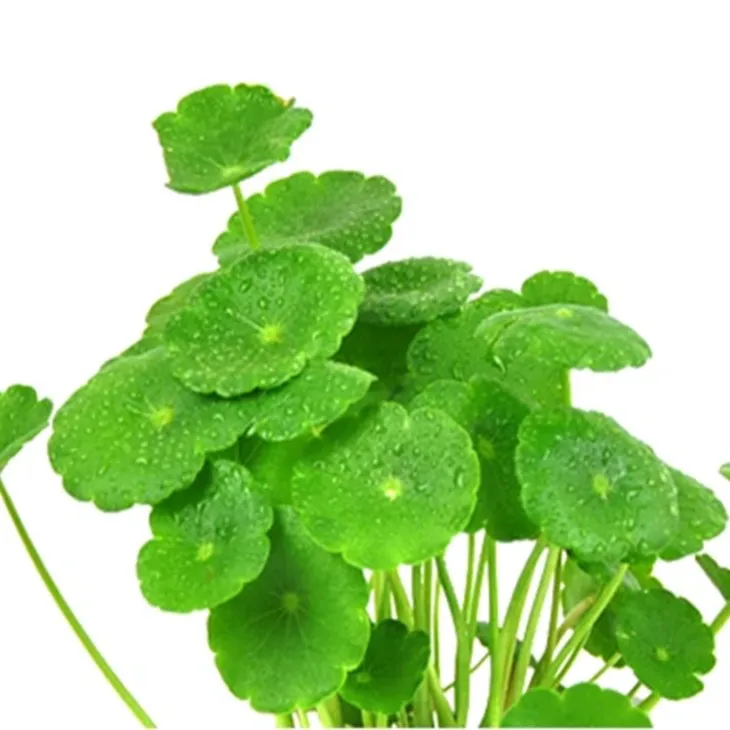- 0086-571-85302990
- sales@greenskybio.com
The process of extracting madecassoside from Centella asiatica extract.
2024-11-29

1. Introduction
Centella asiatica is a well - known plant with significant medicinal properties. It contains various bioactive compounds, among which madecassoside is of particular interest. Madecassoside has shown great potential in a wide range of applications, especially in the cosmetics and pharmaceutical industries. The extraction process of madecassoside from Centella Asiatica Extract is a complex but crucial procedure in the field of natural product isolation.

2. Harvesting of Centella asiatica
2.1. Optimal Harvesting Time
- The fresh Centella asiatica should be harvested at the right time. This is crucial as it ensures the highest content of madecassoside. Different growth stages of the plant may result in varying levels of the compound. It is necessary to study the growth cycle of Centella asiatica to determine the most appropriate time for harvesting.
- After harvesting, the plant is immediately washed. This helps to remove dirt, debris, and other contaminants that may be present on the surface of the plant.
- Then, it is gently dried. Gentle drying is important to preserve the integrity of the plant and its components. Over - drying may lead to the degradation of madecassoside, while under - drying may cause issues such as mold growth.

3. Maceration
3.1. Selection of Solvent
- The dried Centella asiatica is then macerated in a suitable solvent. The choice of solvent is very important. Solvents should be selected based on their ability to dissolve madecassoside effectively while minimizing the extraction of unwanted impurities. Commonly used solvents may include ethanol, methanol, or water - based solvents, depending on the specific requirements of the extraction process.
- Maceration is a simple yet effective method. In this process, the plant material is left in contact with the solvent for an extended period. This allows the solvent to penetrate the plant cells and dissolve the madecassoside. The duration of maceration can vary depending on factors such as the nature of the plant material, the type of solvent used, and the desired concentration of the extract. Typically, it can range from several hours to several days.

4. Separation of Solvent from Plant Material
4.1. Decantation
- After maceration, the solvent needs to be separated from the plant material. Decantation is one of the methods that can be used. Decantation involves carefully pouring off the liquid (the solvent containing the dissolved madecassoside) from the solid plant material. This method is relatively simple but may not be completely efficient in separating all the solvent, especially if there are fine particles of the plant material in the solution.
- Filtration is another common method for separating the solvent from the plant material. Filtration can be carried out using various types of filters, such as filter papers or membrane filters. Filtration is more effective in removing solid particles from the solution, resulting in a cleaner extract. However, it may require more time and equipment compared to decantation.
5. Purification of the Extract
5.1. Crystallization
- The obtained extract is then subjected to a series of purification steps. Crystallization can be one of the purification methods. By carefully controlling the temperature and concentration, madecassoside can be crystallized out from the extract solution while leaving the impurities in the solution. The process of crystallization requires precise control of parameters such as the rate of cooling, the supersaturation level of the solution, and the presence of any seeding agents. For example, a slow and controlled cooling process may result in larger and purer crystals of madecassoside.
- Another purification approach could be using membrane separation techniques. These techniques can selectively separate madecassoside based on its molecular size and properties. Membrane separation can be carried out using different types of membranes, such as microfiltration, ultrafiltration, or nanofiltration membranes, depending on the size and nature of the molecules to be separated. This method has the advantage of being able to separate madecassoside without the use of harsh chemicals and can result in a highly purified madecassoside product.
6. Conclusion
The extraction of madecassoside from Centella Asiatica Extract involves multiple steps, from the careful harvesting of the plant to the final purification of the compound. Each step is crucial in obtaining a high - quality madecassoside product. With the increasing demand for natural products in various industries, the optimization of this extraction process is of great importance. Future research may focus on improving the efficiency of each step, exploring new solvents or purification methods, and ensuring the sustainable harvesting of Centella asiatica to meet the growing market needs.
FAQ:
1. What is the importance of harvesting Centella asiatica at the right time?
Harvesting Centella asiatica at the right time is important because it ensures the highest content of asiaticoside. Asiaticoside is the target compound for extraction, and a higher initial content in the plant material can lead to a more efficient and productive extraction process.
2. Why is maceration a preferred method for the initial extraction?
Maceration is a preferred initial extraction method because it is simple and effective. By leaving the plant material in contact with the solvent for an extended period, it allows the solvent to penetrate the plant cells and dissolve the asiaticoside, thus facilitating its extraction into the solvent.
3. How does crystallization help in purifying asiaticoside?
Crystallization helps in purifying asiaticoside by carefully controlling the temperature and concentration. Under the right conditions, asiaticoside can be made to form crystals while the impurities remain in the solution. This separation based on the difference in solubility and crystallization behavior results in a purer asiaticoside product.
4. What are the advantages of using membrane separation techniques for purification?
The advantages of using membrane separation techniques for purification include the ability to selectively separate asiaticoside based on its molecular size and properties. This can result in a more targeted and efficient purification process compared to other methods, leading to a higher - purity asiaticoside product.
5. Can the extraction process be optimized further?
Yes, the extraction process can likely be optimized further. For example, different solvents or solvent combinations could be explored to improve the extraction efficiency. Additionally, optimizing the parameters of the purification steps such as the conditions for crystallization or the type of membrane used in membrane separation could also enhance the overall process.
Related literature
- “Isolation and Characterization of Asiaticoside from Centella asiatica: A Review”
- “Advances in the Extraction and Purification of Asiaticoside from Centella Asiatica Extract”
- “The Role of Centella asiatica and Its Asiaticoside in Cosmetics and Pharmaceuticals: Extraction Considerations”
- ▶ Hesperidin
- ▶ citrus bioflavonoids
- ▶ plant extract
- ▶ lycopene
- ▶ Diosmin
- ▶ Grape seed extract
- ▶ Sea buckthorn Juice Powder
- ▶ Beetroot powder
- ▶ Hops Extract
- ▶ Artichoke Extract
- ▶ Reishi mushroom extract
- ▶ Astaxanthin
- ▶ Green Tea Extract
- ▶ Curcumin Extract
- ▶ Horse Chestnut Extract
- ▶ Other Problems
- ▶ Boswellia Serrata Extract
- ▶ Resveratrol Extract
- ▶ Marigold Extract
- ▶ Grape Leaf Extract
- ▶ blog3
- ▶ blog4
-
Chinese lotus leaf extract suppliers.
2024-11-29
-
Nature's Bounty Tongkat Ali Extract Powder.
2024-11-29
-
Nature's Bounty lotus leaf extract.
2024-11-29
-
Organic Almond Extract Powder Supplier.
2024-11-29
-
Cat Claw Extract
2024-11-29
-
Saffron Extract Powder
2024-11-29
-
Beta Carotene
2024-11-29
-
Sophora Flavescens Root Extract
2024-11-29
-
Sugarcane Extract
2024-11-29
-
Artichoke Extract
2024-11-29
-
Black Garlic Extract
2024-11-29
-
Lemon Extract
2024-11-29
-
Purple Sweet Potato Extract
2024-11-29
-
Coix Seed Extract
2024-11-29





















